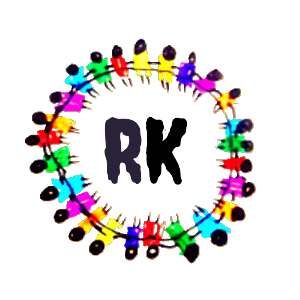What is Binary?
- Binary numbers use only two digits: 0 and 1.
- Computers use binary because their circuits can be ON (1) or OFF (0).
- Each place in a binary number represents a power of 2 (like 1, 2, 4, 8, 16…).
Part 1: How to Convert a Decimal Number to Binary (Step-by-Step)
Let’s start with the decimal number 13 and change it into binary.
Step 1: Divide the number by 2
- Take the number (13) and divide it by 2.
- Write down the remainder (what’s left over after division).
Step 2: Write down the remainder
- If the number divides evenly, the remainder is 0.
- If not, the remainder will be 1.
Step 3: Divide the result (quotient) by 2 again
- Ignore the remainder for this step, only divide the quotient.
- Repeat Steps 1 and 2.
Step 4: Keep dividing until you get zero as the quotient
Step 5: Write all the remainders from bottom to top
This is your binary number!
Example with number 13:
| Step | Divide | Quotient | Remainder |
|---|---|---|---|
| 1 | 13 ÷ 2 | 6 | 1 |
| 2 | 6 ÷ 2 | 3 | 0 |
| 3 | 3 ÷ 2 | 1 | 1 |
| 4 | 1 ÷ 2 | 0 | 1 |
Write remainders from bottom to top: 1101
Part 2: How to Convert Binary to Decimal (Step-by-Step)
Now, let’s change binary 1101 back to a decimal number.
Step 1: Write the binary digits in a row
- Start from the right (last digit).
Step 2: Assign powers of 2 starting from 0
| Binary digit | Power of 2 |
|---|---|
| 1 | 2⁰ = 1 |
| 0 | 2¹ = 2 |
| 1 | 2² = 4 |
| 1 | 2³ = 8 |
Step 3: Multiply each binary digit by its power of 2
- Multiply the digit (0 or 1) by the power of 2 value.
Step 4: Add all the results together
- This is your decimal number!
Example with binary 1101:
| Digit | Power of 2 | Multiply (Digit × Power) |
|---|---|---|
| 1 | 8 | 1 × 8 = 8 |
| 1 | 4 | 1 × 4 = 4 |
| 0 | 2 | 0 × 2 = 0 |
| 1 | 1 | 1 × 1 = 1 |
Add them all: 8 + 4 + 0 + 1 = 13
Why Should Beginners Learn This?
- Binary numbers are how computers understand data.
- Knowing this helps you in programming, digital electronics, and exams.
- It’s a simple skill that opens up new ways of thinking about numbers!

Leave a Reply